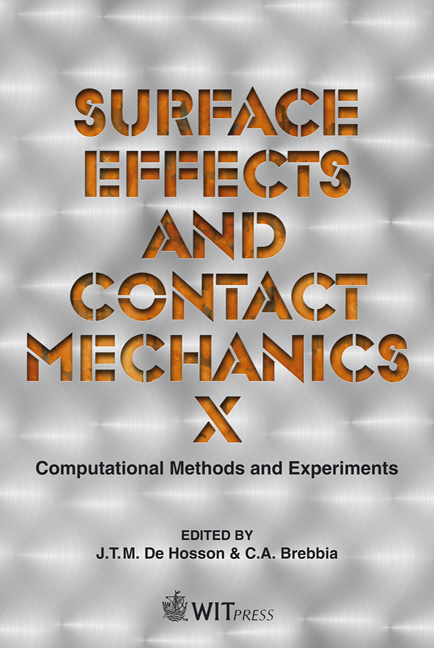Calculation Of Minimum Crack Size For Growth Under RCF Between Wheel And Rail
Price
Free (open access)
Transaction
Volume
71
Pages
12
Page Range
123 - 134
Published
2011
Size
3,295 kb
Paper DOI
10.2495/SECM110111
Copyright
WIT Press
Author(s)
H. K. Jun, D. I. Fletcher, H. S. Jung, G. H. Lee & D. H. Lee
Abstract
Surface initiated cracks in rails by repeated rolling contact between wheels and rails have been one of the growing problems in high speed rail. Estimation of a minimum crack size for growth and its growth rate are the most demanding work to develop a cost effective rail maintenance strategy and prevent rails from failure. In this study, we did a series of modelling runs to predict a minimum crack size for growth, which was defined as a crack that grew fast enough to ‘keep ahead’ of its removal by surface truncation in various contact conditions. For this purpose, we developed crack growth simulation software based on the F&B model suggested by Fletcher and Beynon, and calculated the minimum crack sizes for growth considering the effect of dominant contact contributors such as contact pressure, surface friction coefficient, surface wear rate and initial defect size. The minimum crack sizes for growth were calculated from 0.19 to 3.60mm. Keywords: rolling contact fatigue, surface crack, fatigue crack growth, wheel/rail contact. 1 Introduction Rolling contact fatigue (RCF) [1, 2] is a damage phenomenon that appears on the surface and subsurface of rails. This phenomenon is the result of repeated overstressing on the surface material by the millions of intense wheel and rail contacts. Surface initiated cracks, like a squat [3], is a well-known defect that is observed on the running band of tangent rails. Once a crack has initiated and grown over a certain size, without proper maintenance, it will continually grow and finally bring a whole rail breakage. Crack growth rate at which it progresses
Keywords
rolling contact fatigue, surface crack, fatigue crack growth, wheel/rail contact





